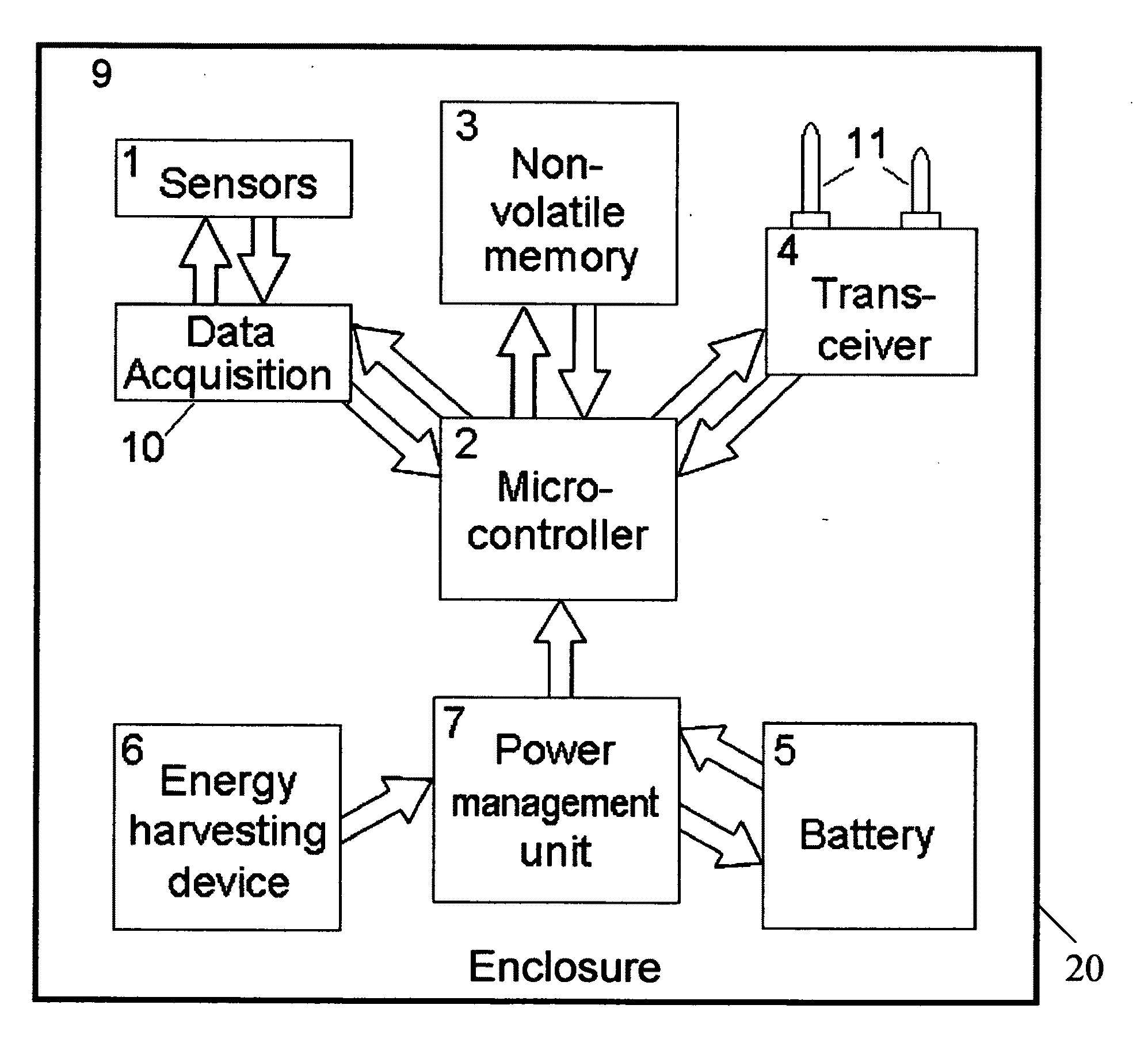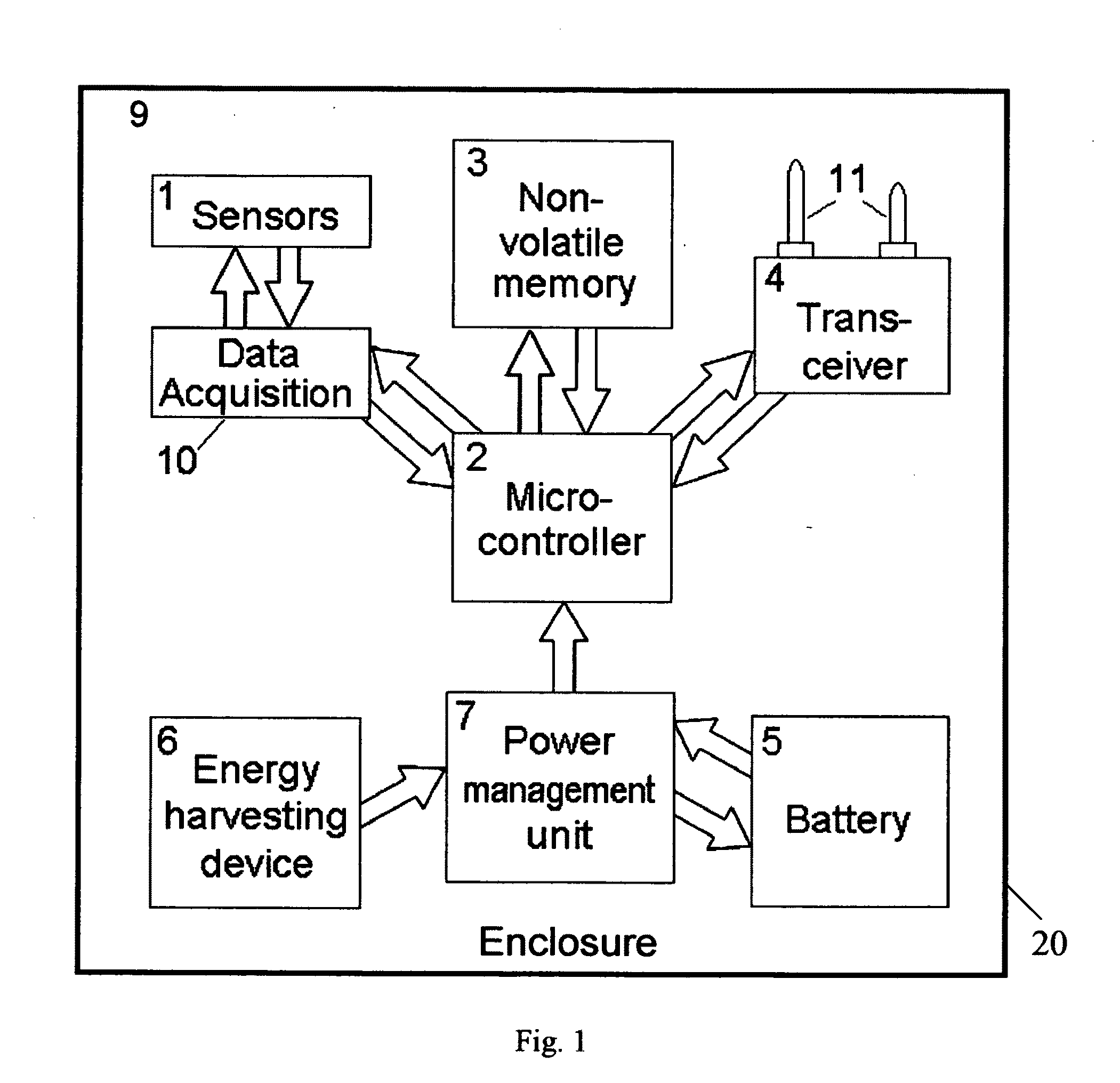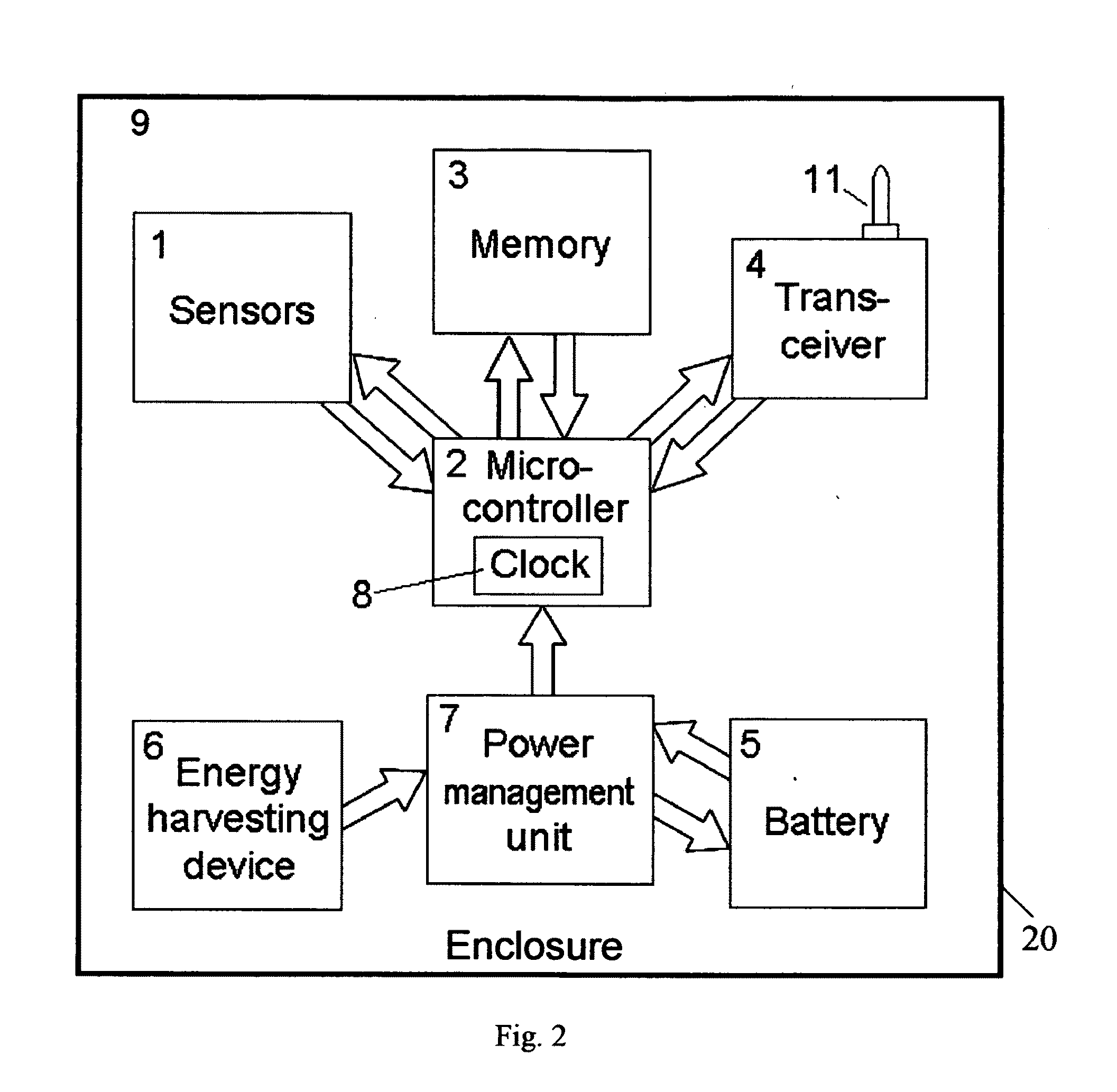Wireless Sensing Module and Method of Operation
- Summary
- Abstract
- Description
- Claims
- Application Information
AI Technical Summary
Benefits of technology
Problems solved by technology
Method used
Image
Examples
first embodiment
[0023]FIG. 1 shows a block diagram of a wireless sensing module 20 according to the present invention. The wireless sensing module 20 comprises a set of sensors 1, including at least one sensor of a physical parameter, a microcontroller 2, a non-volatile memory 3, a transceiver 4 with at least one antenna 11 and data acquisition hardware 10. The wireless sensing module 20 is powered by at least one battery 5. In many cases it is preferable to use several batteries 5. At least one battery providing power to the wireless sensing module 20 is a rechargeable or secondary battery. The wireless sensing module 20 also contains an energy harvesting device 6, which can harvest some energy from the environment. The harvested energy is transformed to electrical energy by this device and the output voltage is supplied to the power management unit 7. The power management unit 7 or power management circuit conditions the output voltage of the energy harvesting device 6 and uses the conditioned si...
second embodiment
[0038]FIG. 2 shows a block diagram of a wireless sensing module 20 according to the present invention.
[0039]The wireless sensing module 20 contains a set of digital sensors 1 containing at least one digital sensor of a physical parameter, a microcontroller 2, a non-volatile memory 3, and a transceiver 4 with at least one antenna 11. Microcontroller 8 is used to generate a sleep-mode clock, which is used to wake up microcontroller. The wireless sensing module 20 is powered by at least one battery 5. At least one battery providing power to the wireless sensing module 20 is a rechargeable or secondary battery. The wireless sensing module 20 also contains an energy harvesting device 6. The output voltage of the energy harvesting device is conditioned by the power management unit 7 and used to charge the battery 5. The sensors 1, the microcontroller 2 with sleep-mode clock 8, the non-volatile memory 3, the transceiver 4, at least one battery 5, at least one energy harvesting device 6, th...
third embodiment
[0041]FIG. 3 shows a block diagram of a wireless sensing module 20 according to the present invention. The wireless sensing module 20 contains a set of sensors 1 containing at least one sensor of a physical parameter located inside the enclosure 9 and at least one external sensor 31 of a physical or a chemical parameter located outside the enclosure 9, a microcontroller 2, a non-volatile memory 3, data acquisition hardware 10, and a transceiver 4 with at least one antenna 11. The wireless sensing module 20 is powered by at least one battery 5. At least one battery providing power to the wireless sensing module 20 is a rechargeable or secondary battery. The wireless sensing module 20 also contains at least one energy harvesting device 6 either located inside the enclosure or embedded in it and at least one external energy harvesting device 36. The output voltage of energy harvesting devices is conditioned by the power management unit 7 and used to charge the battery 5. The sensors 1,...
PUM
 Login to View More
Login to View More Abstract
Description
Claims
Application Information
 Login to View More
Login to View More - R&D
- Intellectual Property
- Life Sciences
- Materials
- Tech Scout
- Unparalleled Data Quality
- Higher Quality Content
- 60% Fewer Hallucinations
Browse by: Latest US Patents, China's latest patents, Technical Efficacy Thesaurus, Application Domain, Technology Topic, Popular Technical Reports.
© 2025 PatSnap. All rights reserved.Legal|Privacy policy|Modern Slavery Act Transparency Statement|Sitemap|About US| Contact US: help@patsnap.com



